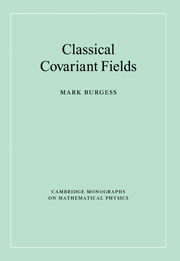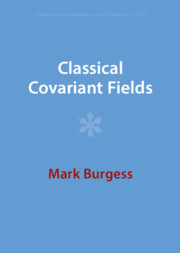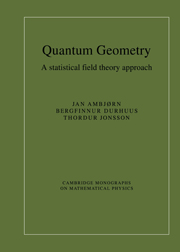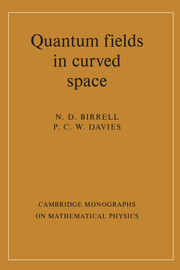Classical Covariant Fields
This 2002 book discusses the classical foundations of field theory, using the language of variational methods and covariance. It explores the limits of what can be achieved with purely classical notions, and shows how these have a deep and important connection with the second quantized field theory, which follows on from the Schwinger Action Principle. The book takes a pragmatic view of field theory, focusing on issues which are usually omitted from quantum field theory texts and cataloging results which are often hard to find in the literature. Care is taken to explain how results arise and how to interpret them physically, for graduate students starting out in the field. Many physical examples are provided, making the book an ideal supplementary text for courses on elementary field theory, group theory and dynamical systems. It will also be a valuable reference for researchers already working in these and related areas.
- Contains material not found in any other books
- A thorough and pedagogical treatment of the subject
- Places emphasis on physical understanding
Reviews & endorsements
"There are two features which make this book a really unique source on this subject. It is very detailed. It seems that nothing has escaped the author's attention. Also, this book is very explicit. All notation and conventions are carefully introduced. In many cases, more abstract formulae are accompanied by their component forms. These two features make this book very convenient to use in research and teaching. I greatly recommend this book as a supplementary text for courses on field theory, group theory, dynamical systems, and particle physics." Mathematical Reviews
Product details
November 2005Paperback
9780521675772
552 pages
245 × 170 × 28 mm
0.862kg
14 b/w illus. 7 tables
Temporarily unavailable - available from TBC
Table of Contents
- Foreword
- Part I. Fields:
- 1. Introduction
- 2. The electromagnetic field
- 3. Field parameters
- 4. The action principle
- 5. Classical field dynamics
- 6. Statistical interpretation of the field
- 7. Examples and applications
- Part II. Groups and Fields:
- 8. Field transformations
- 9. Spacetime transformations
- 10. Kinematical and dynamical transformations
- 11. Position and momentum
- 12. Charge and current
- 13. The non-relativistic limit
- 14. Unified kinematics and dynamics
- 15. Epilogue: quantum field theory
- Part III. Reference: A Compendium of Fields:
- 16. Gallery of definitions
- 17. The Schrödinger field
- 18. The real Klein Gordon field
- 19. The complex Klein Gordon field
- 20. The Dirac field
- 21. The Maxwell radiation field
- 22. The massive Proca field
- 23. Non-Abelian fields
- 24. Chern-Simons theories
- 25. Gravity as a field theory
- Part IV. Appendices.






